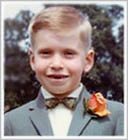An Illustrated History of Old Sutton in St Helens, Lancashire
Part 2 (of 95 parts) - Sutton's Lords & Masters - People of Influence
e) William Pilkington | f) William Blinkhorn | g) Arthur Sinclair | h) John Smith
Researched and Written by Stephen Wainwright ©MMXX Contact Me
William Pilkington | Blinkhorns | Arthur Sinclair | John Smith
Researched and Written by Stephen Wainwright ©MMXX
Old Sutton in St Helens
Hollands | Eltonhead Family
William 'Roby' Pilkington
William Blinkhorn I and II
Arthur Sinclair | John Smith
a) The Daresbury and Norreys Families
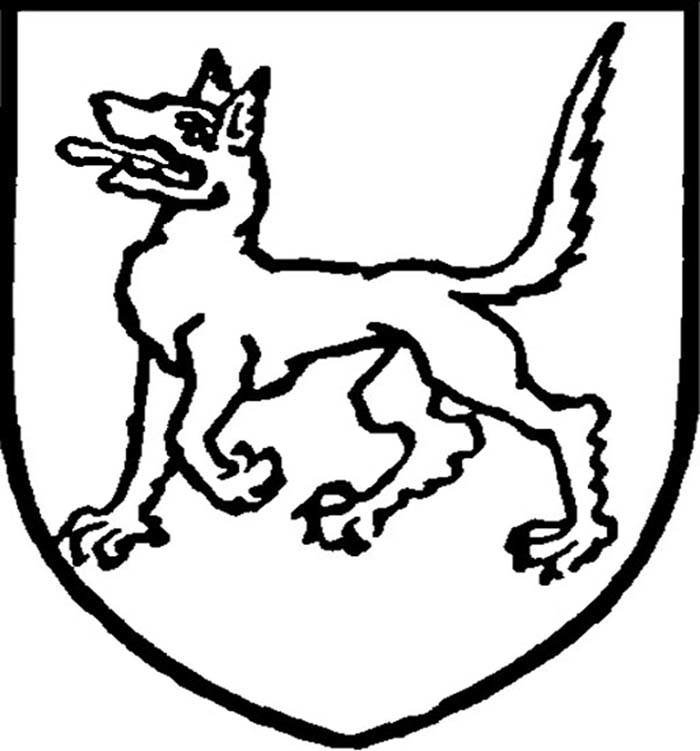
b) The Bold Family of Bold
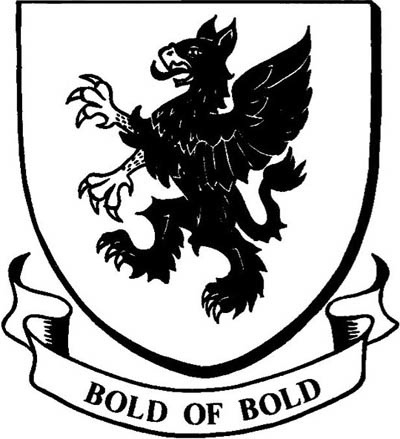
In 1425 Thomas de Bold was at Agincourt. In the levy of 1574, ordered by Queen Elizabeth, the Bold family provided as many horses and horsemen as any family in the county of Lancaster, apart from the Stanleys. When Sir Thomas Bold died in 1612 his estate's inquisition revealed vast wealth with enormous land and property rights in Burtonwood, Great Sankey, Bold, Eccleston, Rainhill, Widnes, Upton, Farnworth, Ditton, North Meoles and Hoole as well as in the township of Sutton. The male Bold line ceased in 1761 with the death of Peter Bold MP who had built a new Bold Hall. His eldest daughter, Annie Maria, inherited the estates until her death in November 1813, aged 81. Then Peter Patten of the Warrington industrialist family succeeded to the Bold estates as he was married to a sister of Annie.
Upon Peter Patten Bold's death in October 1819, the estates devolved to his eldest daughter, Mary, who on December 21st 1822 married Polish nobleman Prince Eustachy Kajetan Sapieha in Florence. The royal couple took up residence at Bold Hall at the beginning of August 1823. However, Mary only enjoyed life as a princess for two years, dying in Rome in December 1824. An interesting sidenote is that despite Prince Sapieha's attendants at his wedding being Russian noblemen, his palace in Poland was plundered by the Emperor of Russia in October 1834. The Bold estates were then devolved onto the late princess's sister 'the lady of Henry Bold-Hoghton, of Walton Hall, heir to the Hoghton baronetage and possessions, who by Royal license and permission, then took the name of Bold before Hoghton' (Liverpool Mercury 8/5/1893).
In 1860 all Bold property was sold to Wigan cotton merchant William Whitacre Tipping and the historic hall was demolished in 1893. (See article on Bold Hall)
c) The Holland Family of Upholland
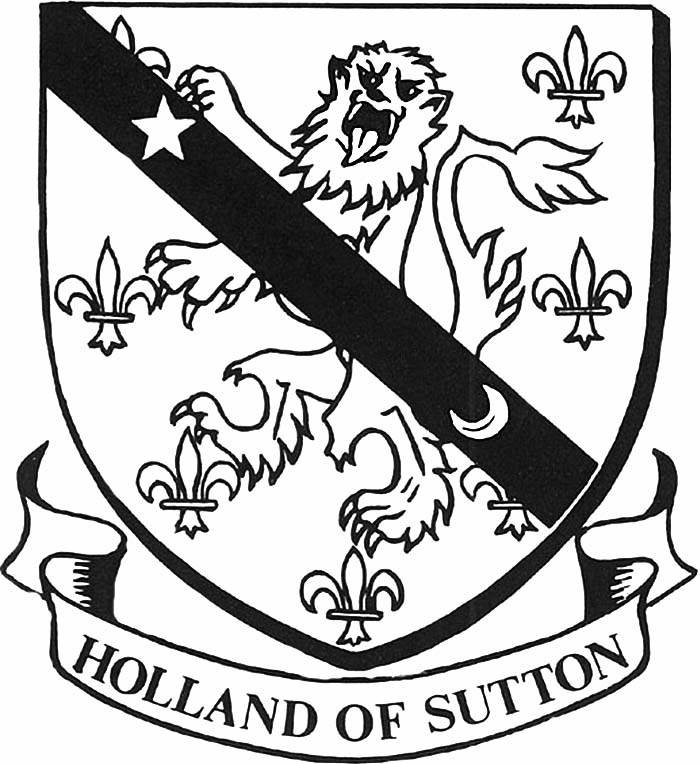
Roger Holland was burnt at the stake at Smithfields in 1558 after moving to London and abandoning Catholicism. He was unfortunate to have been charged and convicted of heresy during the last few months of Catholic Queen Mary's reign. Then during the reign of the Protestant Queen Elizabeth, Thomas Holland, who was born in Sutton Hall in 1600, was found guilty of high treason for administering to London Catholics for eight years. Father Holland was hung and quartered on December 12th 1642. The Hollands then had their estates sequestered at the end of the Civil War after fighting on the Royalist side. A similar fate also befell the remarkable Eltonhead family.
d) The Eltonhead Family
Elton Head Road connects Sutton, Sherdley Park and Lea Green with Rainhill and Thatto Heath. Next time you pass through it, give a thought to the family from Sutton that gave the street its name and after emigrating across the Atlantic became New World pioneers. The Eltonheads not only developed extensive estates in America but, amazingly, have a direct family connection with both the English and American civil wars and two US presidents!During Edward III’s reign in the 14th century, cleric Thomas de Eltonhead was a member of the great military expedition to France, along with other notable Lancashire families, such as the Stanley, Winwick and Molyneuxs. Around 1640 William Eltonhead {1616-1655} left Eltonhead Hall in Sutton for Maryland to take up the position of special envoy to Lord Baltimore. He was the proprietor of the Maryland colony whose interests William oversaw. Back home his brother Richard Eltonhead fought for the Earl of Derby and the monarch King Charles I in the first English civil war. As a consequence of supporting the defeated Royalist Cavaliers, Richard lost most of his wealth and was no longer able to afford dowries for his five young daughters.
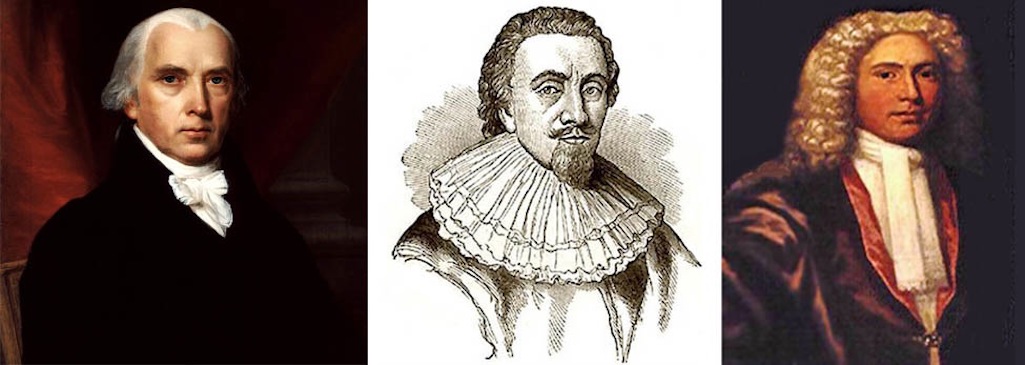
The fourth American president and 'father of the constitution' James Madison, Lord Baltimore and Henry Corbin

Fourth American president James Madison, Lord Baltimore & Henry Corbin

Fourth American president James Madison, Lord Baltimore & Henry Corbin
Burnham died in 1656 after Alice had given him three sons and a daughter. She soon married Henry Corbin who was killed during an Indian uprising in 1676 and then remarried again in 1677. Her uncle William was executed by firing squad after losing an encounter with the Puritans of Providence. However Edward Eltonhead had much better fortune in the New World and was granted 10,000 acres in Maryland for the act of providing fifty men for the province of New Albion.
There have been many notable descendants of the five Eltonhead sisters from Sutton. Politician James Madison {1751-1836} is often considered the 'father of the constitution' and was the great-great grandson of Martha. In 1809 Madison became the fourth American president and is to this day remembered through Madison Avenue and Madison Square Gardens in New York City, James Madison University in Virginia and by countless counties and towns in the United States that also bear his name.
Confederate general Robert E. Lee {1807-1870} was a descendant of Alice and the former US president, Barack Obama {1961- }, can also claim his lineage from the Eltonheads. President Obama, who between 1992 and 2004 taught constitutional law and General Lee, who rebelled against the American constitution, are fifth cousins, eight times removed.
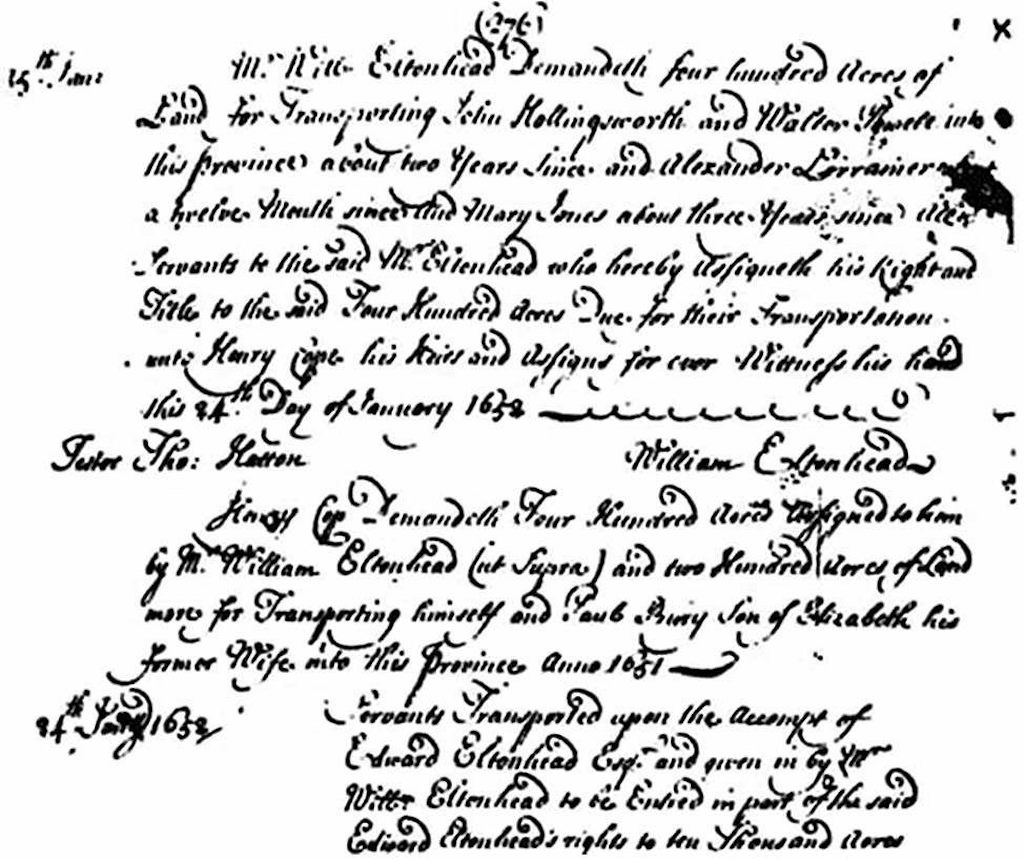
Part of a deed which granted the Eltonhead family of Sutton land in America

Part of a deed which granted the Eltonhead family land in America

Deed granting the Eltonheads land
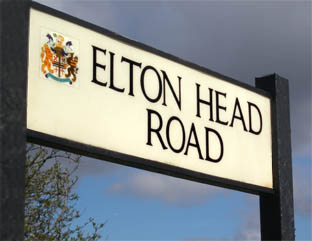
On November 23rd 1915, when the Lowe family of farmers were the occupants, the Liverpool Daily Post wrote that on an outbuilding of the hall there was a ‘much-worn date stone, with a curious blend of crest and coat-of-arms on it. The date is 1663, initials A. E. There are what appears to be four rosettes, but which Mr. Lowe, the farmer, states (before the stone had perished) looked like rabbit heads; there is also the representation of a hand grasping a dagger.’ Elton Head Hall’s Farm still exists and in September 2016 launched a Small Animal Hotel for rabbits, guinea pigs and the like.
The street sign in Elton Head Road also serves as a permanent reminder of the once powerful Sutton family who fell on hard times but did well across the Atlantic. Incidentally the Eltonheads were also the first to start mining in Sutton when, around 1540, a seam of coal was accidentally discovered during the digging of a clay pit.
e) William 'Roby' Pilkington
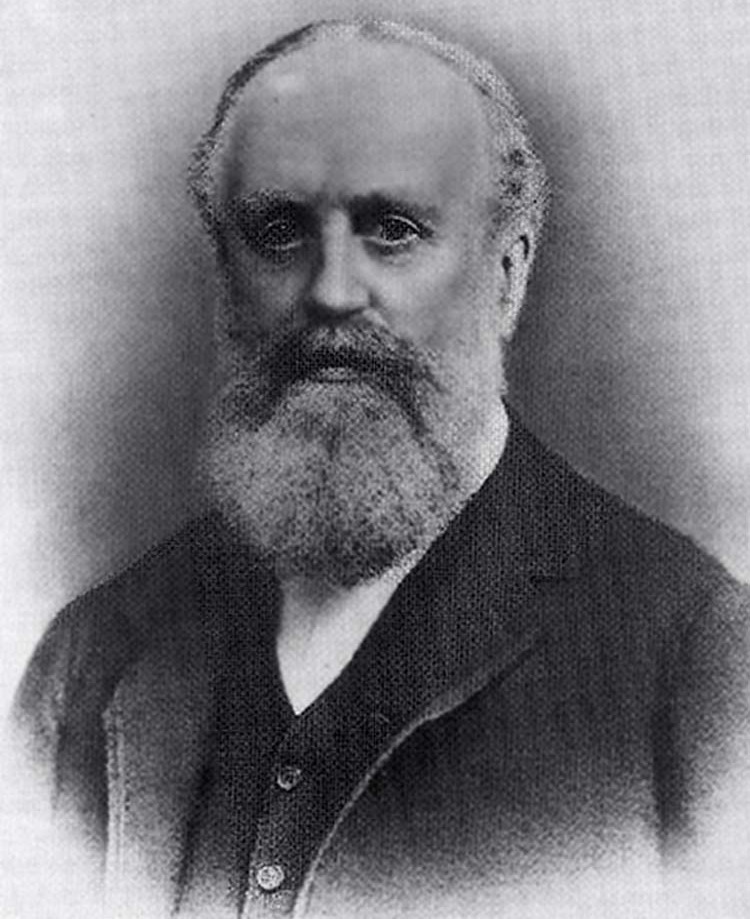
William 'Roby' Pilkington (1827-1903) who was Lord of the Manor of Sutton

William 'Roby' Pilkington who was Lord of the Manor of Sutton

William 'Roby' Pilkington (1827-1903)
In 1854, William Roby married Elizabeth Watson, the daughter of Lee Watson, the founder of St.Helens Foundry and in 1860 he purchased the Lordship of Sutton from Sir Henry Bold Houghton. One responsibility of the Lord of the Manor was to hold regular court barons. These events were supposed to be held every three years, but the ‘court’ held in December 1901 at the Griffin Inn was the first in six years. The Lancashire Evening Post reported that the steward of the manor, Thomas Brewis, who solemnly undertook the ‘quaint ceremonies’, directed the proceedings. These included appointing officials, such as constables, burleymen, ley leyers, impounders, stream lookers and affeerors, who were in charge of fines.
William and Elizabeth chose to make Sutton their home, living at Sutton Grange before moving to Roby Hall in 1874. In an interview in the St.Helens Lantern newspaper on June 7th 1888, Pilkington said:
William 'Roby' Pilkington also gave generously towards the building of All Saints' Church in Ellamsbridge Road which was completed in 1893. At his funeral on April 20th 1903, eight of the oldest employees of Pilkington's glass works conveyed his remains to the family vault in front of St.Nicholas church. William left an estate worth £107,658, around £4 million in today's money. He was survived by four sons and three daughters, one of whom was married to Henry Seton-Karr, St.Helens's first MP. Colonel Lee Pilkington succeeded his father as Lord of the Manor of Sutton and his wife Sybil donated an oak pulpit to All Saints. Incidentally, Colonel William 'Windle' Pilkington (cousin of William 'Roby'), briefly became a councillor for West Sutton ward without fighting an election. The former Mayor of St Helens was co-opted to fill a vacancy on January 26th 1903 but in July was raised to the aldermanic bench and so lost his seat.
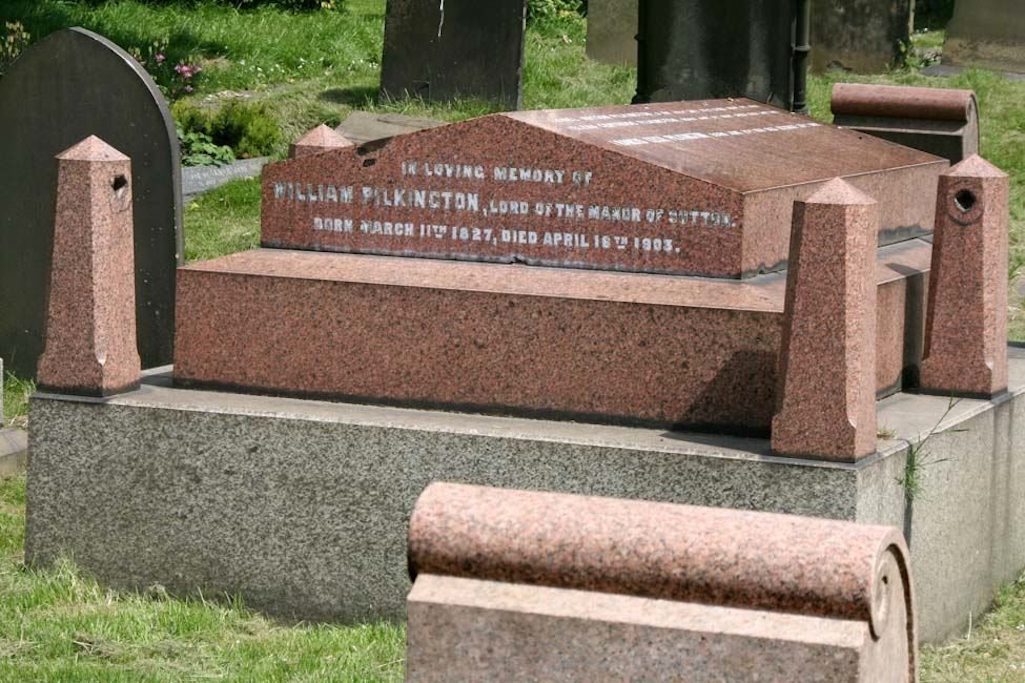
The family vault of William Roby Pilkington, Lord of the Manor of Sutton, in Sutton Parish Churchyard at St.Nicholas Church

The family vault of William Roby Pilkington in Sutton Parish Churchyard

Family vault of William Roby Pilkington
f) William Blinkhorn I & II
The Blinkhorn family originated from Bolton but made such an impression on Sutton folk that a street in Sutton Oak was named after them. They were industrialists but their grand-daughter married into the church and a great-grandson became a famous Arctic explorer and was awarded a knighthood.In the 1851 census, William Blinkhorn (I) (abt.1801-1865) is listed as resident at Leach Hall in Sutton, at the corner of Leach Lane and Gerards Lane. He was born c.1801 in Bolton where he became an alkali manufacturer. Blinkhorn's wife Elizabeth gave him a daughter Maria (b. abt.1830) and son William (II) (abt.1837-1898). The Blinkhorns relocated to Sutton around 1846, so William Snr. could take over as manager of the Sutton Glass Works in Lancots Lane. The London & Manchester Plate Glass Company had just taken over the struggling works and under Blinkhorn's leadership it became a successful enterprise.
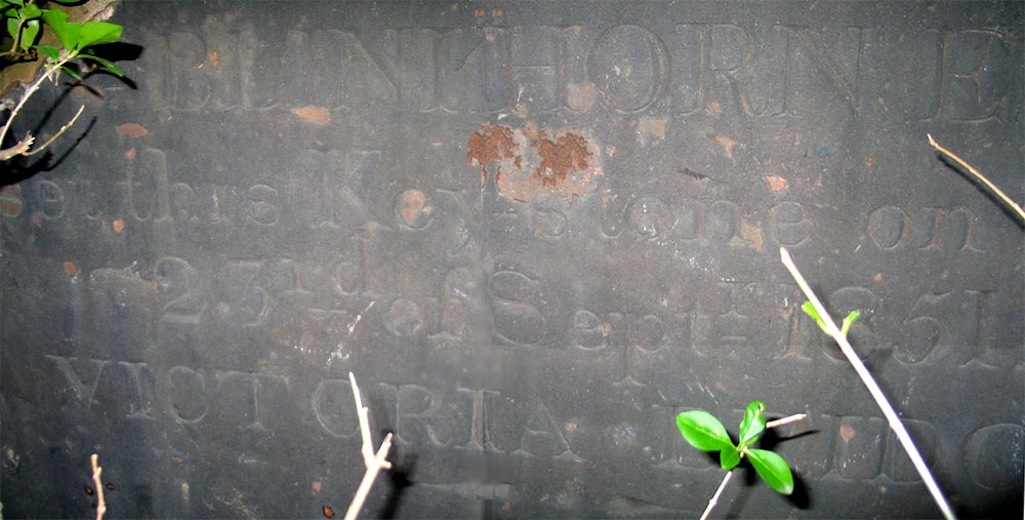
The inscription to glass works manager William Blinkhorn on the reverse side of Victoria Bridge in Gerards Lane, Sutton

The inscription to William Blinkhorn on Victoria Bridge in Gerards Lane

Inscription on Victoria Bridge
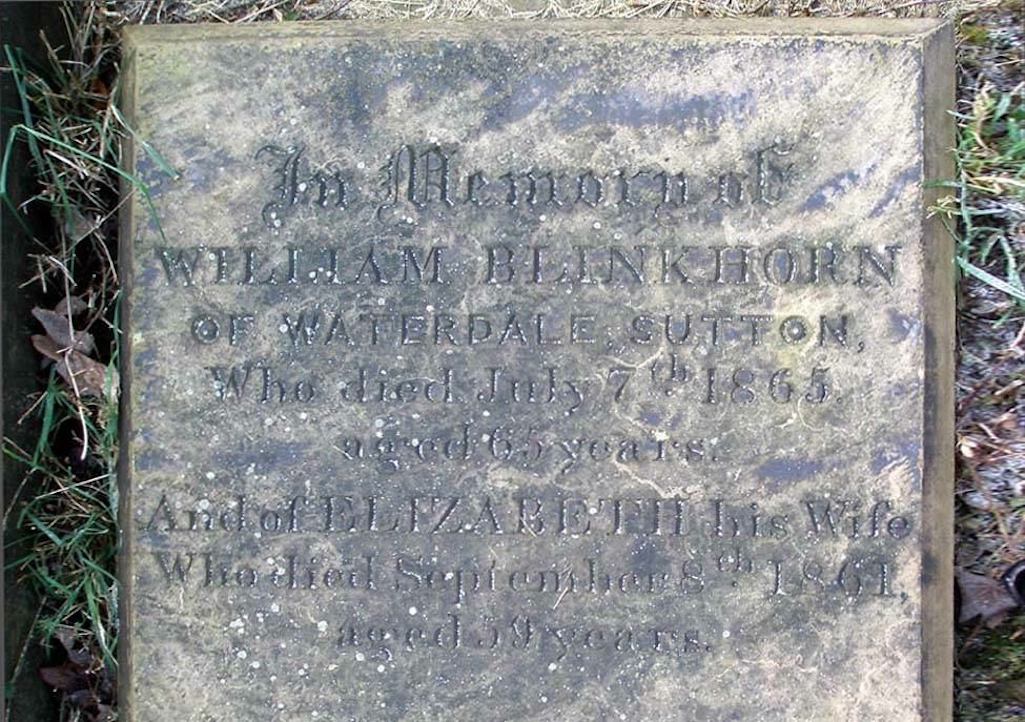
The Blinkhorn memorial in the graveyard at St. Nicholas Church in New Street, Sutton adjacent to the Hughes family vault

The Blinkhorn memorial in the graveyard at St. Nicholas Church in New Street

Blinkhorn memorial at St.Nicholas
William died on July 7th 1865 aged 64 and on the day of his funeral, most shops in Sutton closed as a mark of respect. Many households closed their curtains and crowds lined the streets from Waterdale to Sutton Church, with many of them walking behind the funeral cortege. His son William Jnr. took over managership of the extensive glassworks and, like his father, was also said to be very popular with the workforce. He was renowned for breeding Laverack setters, a strain of English Setter dogs, until he sold them at auction in 1875. A classified advert in the Morning Post described them as 'celebrated and valuable'. He became a J.P. on the County Bench in 1872 and for many years was a church warden at Sutton Parish Church.
Blinkhorn Jnr. suffered a stroke in 1878 and never fully recovered, although he did marry for a second time on March 22nd 1884. This took place at St. Margaret's Church, Westminster Abbey and his new bride, Sara, was the daughter of John Marsh of Rainhill������������ who served as Mayor of St.Helens in 1871 & ’72. William retired around 1888 at little more than 50 years of age and endured a second stroke in 1894, dying four year later at his home at Sutton Grange on February 5th 1898.
At the funeral eight employees from the Sutton Glassworks casting hall carried William’s coffin from his home to the hearse. The Blinkhorns were renowned as generous benefactors for the people of Sutton and Wm. Snr. donated the land in Lancots Lane that the first Sutton Methodist Church was built on. This became the home of the non-denominational Welsh in 1893 (see Sutton Churches and History of Religion Part 4 pages).
A road in Sutton Oak was named after the family. It was originally known as Blinkhorn Row and later Blinkhorn Street and was situated by the side of Sutton Oak railway station, although it no longer exists. There also used to be a Blinkhorn Rooms in Waterdale Crescent, which was donated by Wm. Snr. to Sutton Parish Church. It was used initially for schooling, then as a meeting place for various church groups, including the Women's Fellowship and later as a boy's gymnasium (read article on the Blinkhorn Rooms here).
William Blinkhorn (II) had two daughters from his two marriages. Eldest daughter Elizabeth Blanche (? - 1926) married William John Jeeves (1865 - 1932) on January 7th 1896. Jeeves served as St.Helens Corporation Town Clerk from 1891-99, before taking a similar position in Leeds and in 1920 became a King's Counsel. Daughter Emily married Rev. Maximilian Frederick Breffit Binney (1860 - 1936). He was the second vicar of Sutton Parish Church and their marriage service took place in Kendal in October 1898. Two years later Rev. Binney left St.Helens to become Vicar of Richmond. However within weeks of moving to Surrey, his wife Emily died from pneumonia.
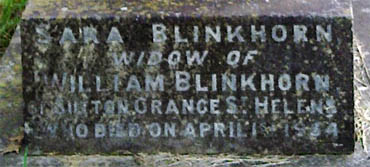
As for William Blinkhorn's widow Sara, she appears to have moved to Berkshire to live with her sisters. Sara died on April 1st 1934 at Heathfield in Sunninghill and is buried in St.Michael and All Angels graveyard. The gravestone inscription says 'Widow of William Blinkhorn of Sutton Grange, St. Helens'.
g) Arthur Sinclair
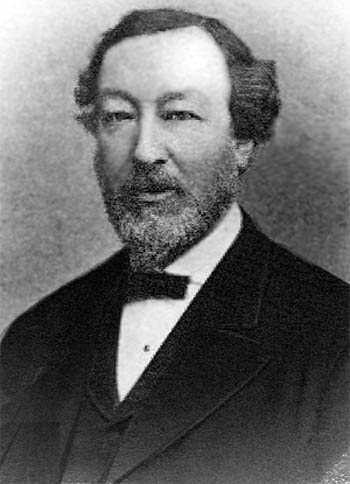
Born in Mereworth in Kent in 1823, young Arthur gained valuable railway experience working in the office of the Bolton & Preston Railway Company, where his father Peter was secretary. In May 1843 at the age of only 20, Arthur was appointed secretary of the St.Helens & Runcorn Gap Railway. In October 1844 Peter Greenall MP, concerned about poor sanitary and housing conditions, recruited Sinclair to help establish an Improvement Commission for St.Helens. This was created by Act of Parliament on July 21st 1845 despite considerable opposition (Sutton was excluded) and the Commission is credited as the start of effective local government in the town. This was also the date when royal assent was given for the creation of the St.Helens Canal & Railway Co. and Arthur became its secretary and manager.
On October 15th 1846, he married Margaret Robinson of Sutton, whose father John was a partner in the colliery firm of Bourne and Robinson. Initially they lived in Liverpool Road but about 1855 moved to Garston where they lived at Dale House.
Sinclair was made a St.Helens Improvement Commissioner in January 1848 and was later made Chairman. On August 1st 1864 the St.Helens Canal and Railway Co. was absorbed into the London & North-Western Railway and Sinclair lost his job along with other well-known staff members. One of these was engineer James Cross, who for ten years had been working with Arthur in developing the company. Cross took its former loco workshops near St.Helens Junction on lease and soon afterwards his old boss joined him in partnership. As James Cross and Co. they made locomotives mainly for foreign markets but six years later surrendered their tenancy.
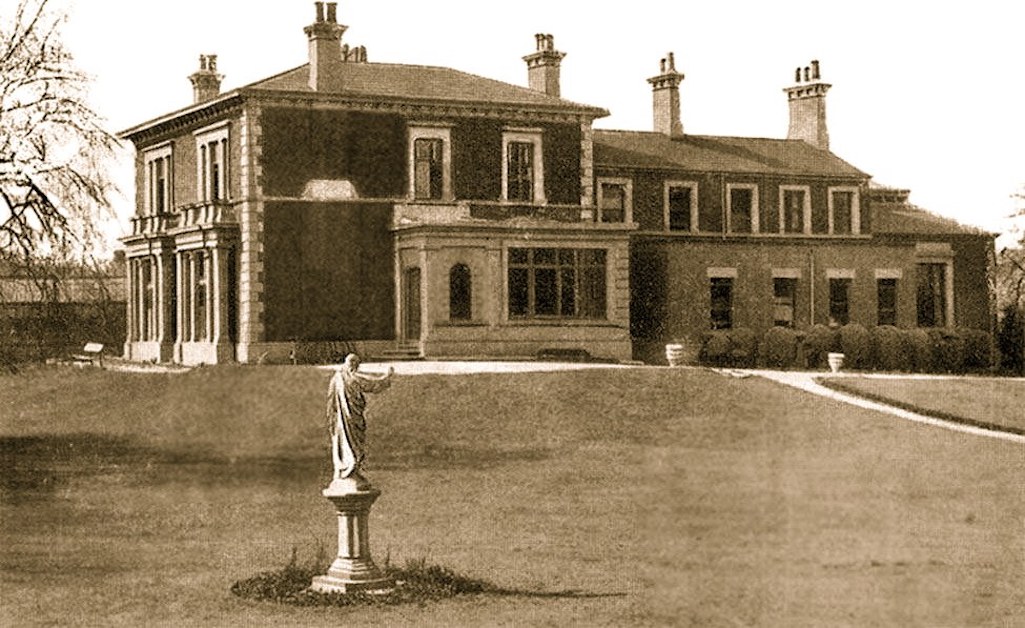
Waterdale House in Sutton off Robins Lane which was home to William Blinkhorn, Arthur Sinclair and Sutton Convent

Waterdale House - home to William Blinkhorn, Arthur Sinclair & Sutton Convent

Waterdale House off Robins Lane
The head gardener was Thomas Smith who during the 1880s acted as a judge in regional gardening competitions. In 1882 adverts appeared in local newspapers with details of a hothouse auction sale that was scheduled to take place at Waterdale on December 14th. This involved numerous glass erections, including eight vineries, three cucumber houses and azalea and orchid houses. In total the sale involved 20,000 feet of glass, heated by 4500 feet of hot water piping. The sale was being made by William Blinkhorn. So it’s likely that Arthur Sinclair had leased the property and gardens from the Sutton Glassworks boss but no longer needed the hothouses.
Also in 1882, Sinclair was elevated to the very first borough bench of magistrates, as the people of St.Helens had until then been served by a county bench. Now in retirement, he was the only one of 18 appointees whose occupation was stated as 'gentleman'. For many years Sinclair was a member of the Corporation’s Free Library committee. On May 17th 1882, a special resolution was passed by the committee congratulating Arthur Sinclair on the honour of being made a magistrate. This was in view of his longstanding work, which had helped to create the present extensive library. He was also instrumental in the decision to open a branch library in Sutton. This was opened in a former house and shop in Sutton Road on February 3rd 1887 (more here).
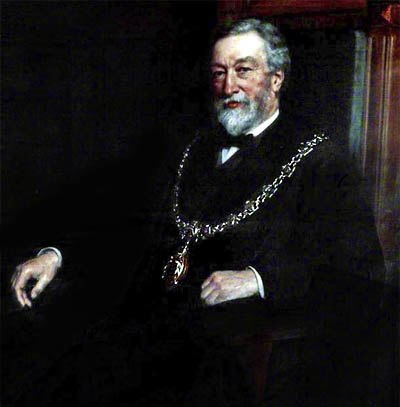
During his time Sinclair supervised the adoption of a new Improvement Bill in St.Helens and he also had to deal with the effects of a lengthy coal strike. These included a number of disturbances with riots and attacks on the police at Sutton Heath and Ashtons Green collieries. A pit fireman called Harrison had his house wrecked and bands of miners were reported to have seized bread and provisions from shops. The Home Secretary Herbert Asquith sent a telegram to Sinclair ordering that the disturbances be quelled. The military were placed at an hour's notice if needed by the mayor and 50 hand-picked Liverpool police officers were quartered at the Volunteer Hall.
In May 1893 it was proposed by St Helens Council that Arthur Sinclair’s fifty years of service to St.Helens should be commemorated. A subscription list was opened and nearly £700 collected. The celebrated artist John Collier was commissioned to paint two portraits in oils. In his career, the prolific Collier was responsible for dozens of portraits of public figures including Rudyard Kipling, Lord Kitchener, Charles Darwin, Ellen Terry and the future King George V.
On August 1st 1894, two portraits of Sinclair in huge gilt frames were unveiled. One measured 4'7” x 3'7” and was hung in the St.Helens council chamber, where it still resides today. At its foot is the inscription 'Alderman Arthur Sinclair, J.P., Mayor of the Borough of St. Helens, 1892-3, 1893-4. Presented to the Corporation of St. Helens by Alderman Sinclair's fellow-townsmen, in grateful recognition of constant and ungrudging services rendered to the borough throughout a period of 50 years. August, 1894.' A smaller portrait was also given to his family. The balance of the public subscription, after Collier had been paid, was used to fund the newly-created Sinclair Scholarships at Cowley Schools.
In June 1897 Arthur Sinclair paid for 1200 Sutton children to travel by special train to Thatto Heath in order to participate in a fête at Grange Park. This was part of the Queen Victoria Jubilee celebrations and his generosity saved the children a four mile walk.
Arthur died on December 14th 1900 at the age of 77 after an illness of six weeks. There were many glowing tributes. Magistrate J. B. Leach at the start of a Police Court sitting declared that Sinclair was one of the founders, if not the founder, of greater St.Helens. He said he would be remembered as "one of the most noble and one of the greatest men" of the town. The Vicar of St Helens Parish Church, Rev. Canon Willink, spoke in his pulpit of the Alderman being one of St Helens' foremost citizens who had been closely associated with the "pious, educational, and social developments of the town generally". Arthur Sinclair's imposing home, Waterdale House, became the home of Sutton Convent after they relocated from Fenney's Lane.
h) John Smith
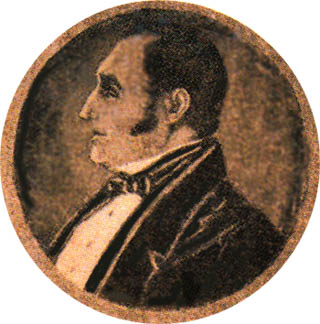
John Smith was born in 1794 in Windle to James and Anne Smith (née Chisnall). His father had made shoes before becoming a bricklayer and his mother had been a servant in Parr. Little is known about John Smith’s early life but Father Ignatius Spencer later related how he “took delight in recounting how, after being brought very low by untoward circumstances, he had to begin life again by going to work as a labourer, without a sixpence in his pocket.”

John Smith (1794 - 1863)
By now John Smith was the owner of a considerable amount of land in the district surrounding St.Helens Junction. In 1849 he donated twelve acres to the Passionist community to build in stone a Gothic-style church with tower and steeple and an adjacent monastery. You can read a full history of St. Anne’s here. The first Passionist record of the foundation of St. Anne’s clearly identifies Smith as the benefactor responsible for its creation: ‘The establishment of this Mission and Retreat is due entirely to the generosity and practical faith of Mr. John Smith, a Railway Contractor of Sutton, St Helens, Lancashire.’
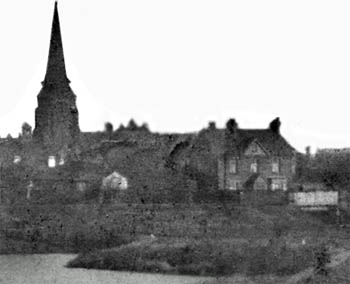

St. Anne’s Villa by St. Anne’s Church
Smith was known as the ‘poor man’s friend’ and he was a member of the Prescot Board of Guardians, who oversaw relief for the poor, and he was also an overseer of Sutton Township. John Smith died on June 10th 1863 at the age of 69. He had been ill for a fortnight and had received personal nursing care from Elizabeth Prout, whose possible canonisation is presently being considered by Rome. The St.Helens Newspaper described how at his funeral large crowds gathered at 9:30am as the monastery bell began to toll. The Liverpool Daily Post reported that a ‘great number of spectators assembled to witness him borne to his last resting place’ and they went on to say that:
